Your cart is currently empty!

Best Balance Bikes for Kids
Learning to ride a bike is all about good balance and coordination. Developing these skills is the key to getting a child to learn to ride a bike safely and quickly. Balance bikes are great for young kids just starting to learn how to ride a bike. Today, we’re talking all things balance bikes – from the difference between a balance bike and a pedal bike, the benefits of balance bikes, and how to choose the right balance bike for your child. Plus, we’ve rounded up the best balance bikes out there and we’re giving you our full review of each. Let’s go balance biking!
{Post contains affiliate links}
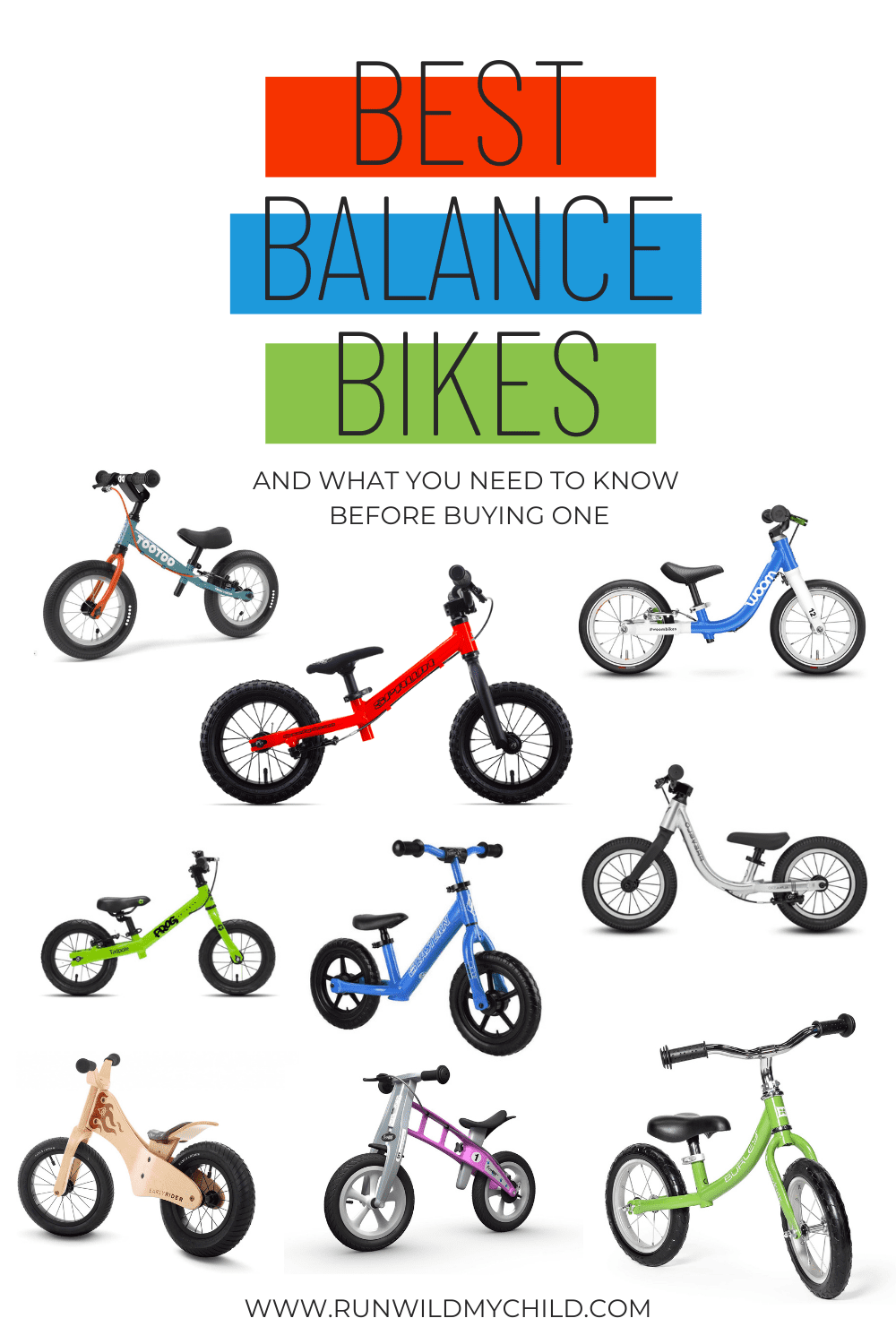
Learning to ride a bike
Do you remember learning to ride a bike? Maybe your parents helped you by holding on and running alongside of you. Or, maybe you rode a bike with training wheels until you were more than ready to master biking without them. Whatever the case, you probably started biking with a traditional pedal bike (and probably one with training wheels). Balance bikes weren’t really a thing back in our day, but they’re prevalent now and for a good reason. Many experts believe that balance bikes help young children develop those good balance and coordination skills needed for bike riding much better than a pedal bike with training wheels. And there are a lot of other benefits of balance bikes, as well. Let’s take a look!

Difference between a balance bike and a pedal bike
A balance bike is a bike without pedals. It has most of the essential elements of a traditional bike (frame, fork, handlebars, wheels, etc.), but it has no drivetrain and thus no need for pedals. Kids straddle the bike, just like a regular bike, but instead of pedaling, they push off the ground with their feet to move forward and place their feet down to stop. Their legs remain on the side of the bikes and their feet on the ground, so they hold the bike up – there’s no need for training wheels or stabilizers. Since they’re in control, they can develop their balance and coordination first, before progressing to a bike with pedals.
Balance bikes are also relatively low to the ground. Because kids need to reach the ground with their feet to balance the bike and move it forwards, balance bikes tend to be lower and smaller than traditional pedal bikes. The seat is low to the ground, putting their torso in an upright position so their feet can reach the ground. Being lower to the ground and the low center of gravity gives kids a much more secure feeling and helps with their balance, as they don’t feel as top-heavy or struggle as much on turns.
Kids progress differently on a balance bike than on a pedal bike. On a balance bike, kids begin by pushing off the ground and walking the bike. Once they’ve mastered that, then they progress to running with the bike, lifting their feet, and striding and gliding. Once they know how to safely pull their feet up off the ground and stay going and balanced, they’re pretty much ready for a pedal bike.
 Photo credit: @tkphotographychicago
Photo credit: @tkphotographychicago
Balance bike vs. training wheels
While there’s no right or wrong answer here (and every kid is different), there are some benefits of starting kids out on a balance bike over a bike with training wheels. However, this depends on a lot of factors, including your child’s age, comfort, skill level, coordination, etc.
A bike with training wheels is held upright by the two small outrigger wheels. These wheels are usually set up a little higher than the rear wheel, which means that the bike tips a bit from side to side as the child’s weight transfers from one training wheel to the other. Kids tend to learn to lean on the training wheels, creating a false sense of balance. In order to ride without the training wheels, a child must unlearn how to ride unbalanced and then learn how to ride while balanced.
Balance bikes tend to be better for younger riders. Because they’re so simple to use and there’s no learning curve, balance bikes tend to be more intuitive for smaller/younger kids to use quicker. They weigh less than normal bikes, which means they’re easier for even the smallest kids to manage and maneuver. By taking the work of pedaling out of the equation, little kids can concentrate on the more tricky skills of staying balanced and moving.
Best age to introduce kids to a balance bike
Like most things in parenting, there’s no magic number as to when you should start kids out on a balance bike. Toddlers as young as 18 months or two years old can start their balance bike journey. That being said, there are balance bikes made for all sizes of toddlers, preschoolers, and grade-schoolers, so it’s basically never too late to start.
Introducing a balance bike early will allow your toddler to learn to ride independently from the very start. Starting them young will not only allow them to happily ride their bike independently for all of their toddlers years, it will also allow them to move up to a pedal bike by age 3 or 4.
How long do kids ride balance bikes?
Kids generally ride balance bikes for 1 to 3 years, depending on the age they start, their coordination and athletic ability, and their developmental readiness.
A child that starts riding a balance bike as a young toddler may take several months to sit and run confidently on their balance bike. But, that child could then spend a few years enjoying the bike. Children who start later (2-4 years old) will pick up how to ride a balance bike more quickly. It’s totally up to you (as the parent) and your child how long they remain on the balance bike before moving onto a pedal bike.

Things to consider when buying a balance bike
If you’re convinced that a balance bike is a good fit for your child, there are quite a few things to consider before purchasing. Not all balance bikes are the same and you should pick a bike that is best suited for your child and how they’ll be using it. Here are a few things to consider:
1. Balance bikes are not one-size-fits-all
Balance bikes come in all shapes and sizes. Many brands even carry an entire line of balance bikes for toddlers of varying ages, sizes and abilities. You should make sure the bike you’re purchasing is best suited to fit your child and will be able to adjust with them as they grow. Many bikes will give an age range for quick sizing, but not all kids are the same size at any given age. The best way to ensure a proper fit is to measure your child’s inseam. Then, compare it to the seat height of the bike. Look for a bike with a minimum seat height that is equal to or slightly less than your child’s inseam.
2. Price can be a factor
There are a wide variety of balance bikes on the market, and they run the gambit of prices. Balance bikes range anywhere from $80-$300, and a lot of times, you get what you pay for in terms of quality and durability.
A more expensive bike will usually be lighter, longer-lasting, and have more safety features. These brands usually use better quality parts, have better warranties/customer service, and will often have a better resale value. Cheaper bikes can often look like their more expensive counterparts, but the quality and attention to detail suffer. They may not last as long or have many of the better features that quality brands offer. However, if you know your child won’t be using the bike for long and cost is a big deciding factor, a less expensive bike may be a good option. That being said, you can usually find good-quality balance bikes on resale websites and in bike shops for a fraction of the original retail price.
3. Air tires or foam tires?
Many tires on balance bikes are made of solid foam rather than air. This can make a big difference in how the bike rides. Higher quality/price bikes will have air tires/wheels, with alloy rims, and hubs with steel spokes. Budget balance bikes tend to have puncture-resistant solid foam tires. Pneumatic (air) tires provide more cushioning and grip, while foam tires offer little to no cushioning and less traction. Air tires with a wide tread also give better grip on rough surfaces, while those foam tires with a narrower smooth tread will roll faster and be less grippy. If your child will be riding their bike on any surface other than pavement, the air tires are a valuable upgrade.
4. Do you need handbrakes on a balance bike?
Balance bikes can come with no brakes, rear hand brake only, or both front and rear hand brakes. Without any kind of braking system, kids naturally learn to stop a balance bike with their feet. This is okay at slower speeds when your kids are really little, but as they get older (and start riding harder and faster), a handlebar brake lever could help them stop faster (and save money on buying shoes)!
Small toddlers and little riders just getting started with a balance bike (around 18 months old) do not have the coordination required to use a handbrake. At this point, the handbrake is a bit worthless because their feet will do the work for them (they’re not going fast, anyway). Therefore, if you’re buying a balance bike for a tiny toddler that won’t be riding the bike for very long, a handbrake may not be needed (it affects the price).
However, by the time your child reaches about 2 1/2 – 3 years old, they will be able to use the handbrake (and may actually need it). Plus, it is good practice for older toddlers and children getting ready to transition to a pedal bike, so they learn the proper way to brake. If your child is going to use their balance bike for a long time (several years) or you’re starting them after 2 1/2 years old, a braking system is probably a good idea.
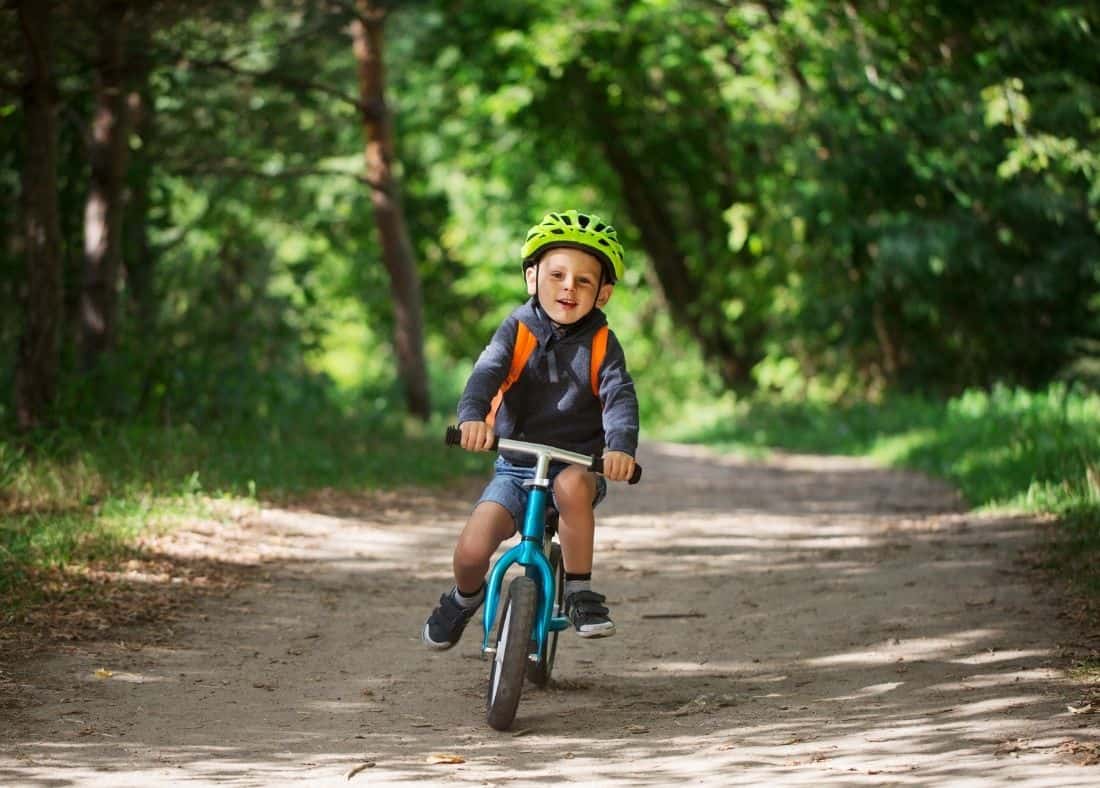
Best balance bikes for kids
We did some serious digging into the best balance bikes on the market for kids. The brands we’ve listed below are the ones our Creative Team members tried and tested on their own kids over the years or that we received glowing feedback on from our online community. We’ve listed 13 quality brands below that all make excellent quality balance bikes for toddlers. The difference between many of these bikes comes down to a few key features (air or foam tires, presence of handbrakes) and basic size/shape/weight.
There’s no one right bike for everyone – we hope that our research helps you narrow down the hundreds of choices out there to just a few, depending on what features you’re looking for, the size/age of your kids, where you’ll be riding it, and how much you want to spend. Our favorites are as follows:
- Best overall – Woom 1
- Best budget-friendly bike – Banana Bike GT
- Most eco-friendly – Early Rider Classic
- Safest – FirstBIKE Street
- Best for bigger kids – Belsize 12
- Best for tiny kids – Frog Tadpole Mini
- Most popular – Strider Sport
- Best balance bike for off-roading – Spawn Tengu 12
Best balance bike brands for toddlers
Here’s a detailed breakdown of each of the brands we chose to include in our best balance bikes for kids roundup. Many other brands were considered; however, we chose to only include the best ones to help you narrow down the field. Here’s what we liked about each of them (listed in alphabetical order).
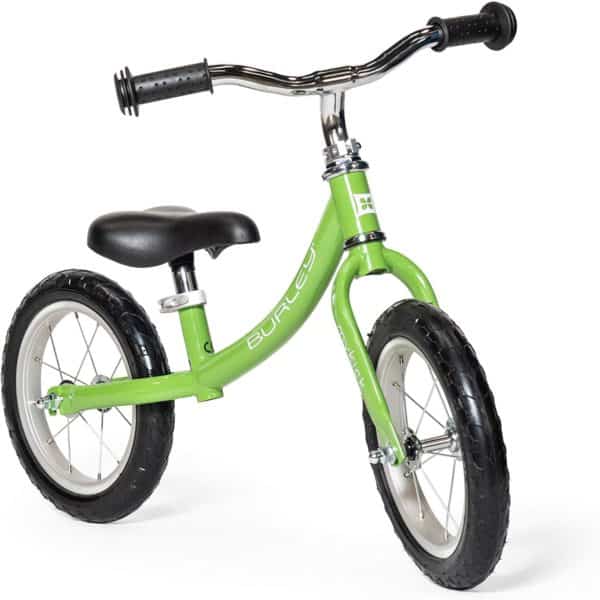
Burley
Price: $129
Pros: We love all the Burley products we’ve tried (Minnow, Encore X), so the Burley MyKick balance bike was high on our list. It has a durable steel frame with a low stand-over height, and tool free adjustment for the kid-sized seat. Adjustable handlebars with comfortable rubber grips, quality, spoked wheels and comes fully assembled out of the box.
Cons: The bike has rubber/foam tire (not air tires) and no handbrakes.
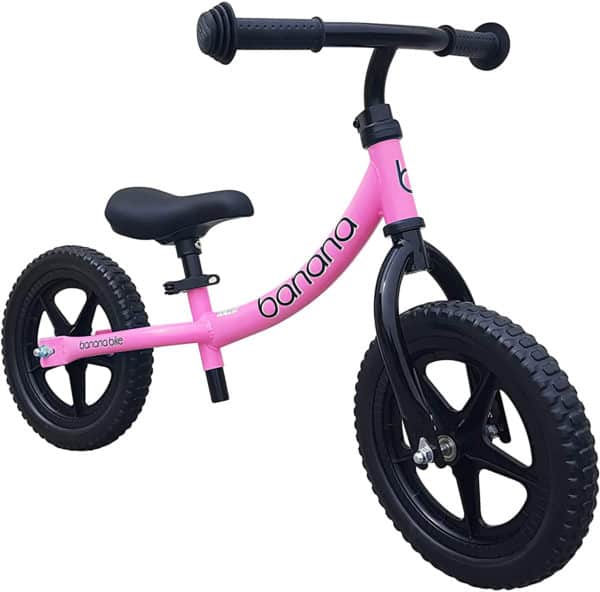
Banana Bike
Price: $59-$69
Pros: The Banana Bike is a great budget-friendly balance bike option for kids. The Banana Bike balance bike line has two options: GT and LT (with the LT being slightly smaller with foam tires). The GT version has pneumatic (air) tires with great grippy treads that can be ridden in various terrain. They both have the classic banana-shaped step-through frame design that makes it easy for small riders to mount.
Cons: There’s no steering limiter on the bike’s handlebars, so the handlebars can overrotate while riding. No handbrakes.
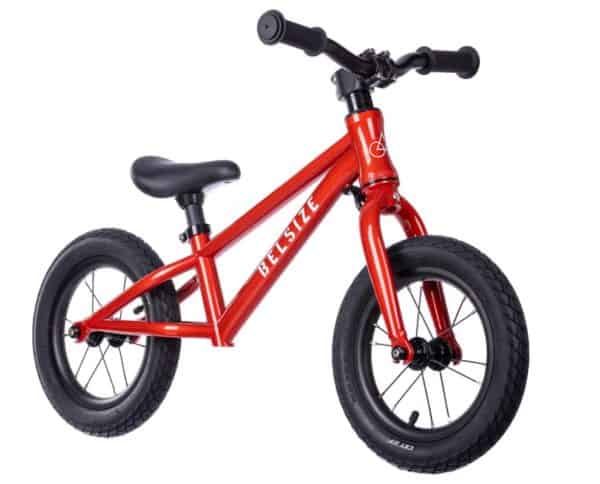
Belsize
Price: $169
Pros: The Belsize 12 balance bike is somewhere in between a budget-friendly balance bike and a top-of-the-line bike. It comes with pneumatic (air) tires that offer great traction in all kinds of terrain. The weight of the bike is only 6.4 lbs, and the bike has an ultra-lightweight aluminum alloy frame with kid-specific geometry and quality parts. It’s a larger balance bike and the bike’s frame is taller than some others that are step-through, so this bike is better suited for taller toddlers and older kids.
Cons: Higher price for no handbrakes or quick-release seat post clamp.
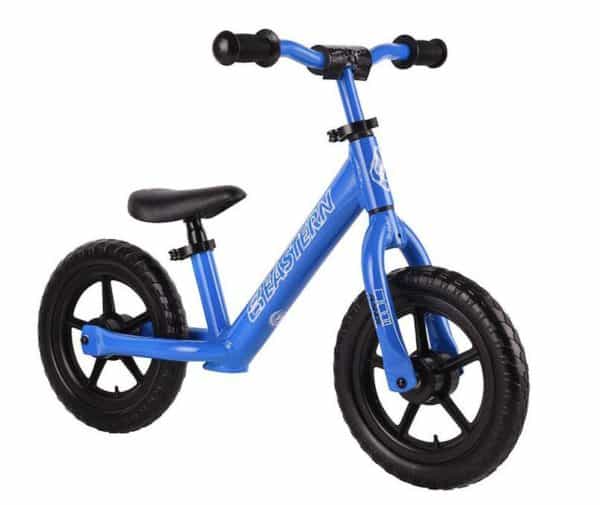
Eastern Pusher
Price: $140
Pros: Made by BMX, the Eastern Pusher is a super light (only 4.6 lbs) and durable push bike for your little ripper. The Eastern Pusher is built up with easily adjustable quick-release clamps to grow with the rider. Sealed bearing wheels, a super lightweight alloy frame, one-piece handlebar/stem combo with quick release for easy adjustment, and soft rubber grips with larger ends to aid in handling.
Cons: Foam tires and no handbrakes. However, we’ve heard that when put to the test, the tires are non-marking and have relatively good traction.
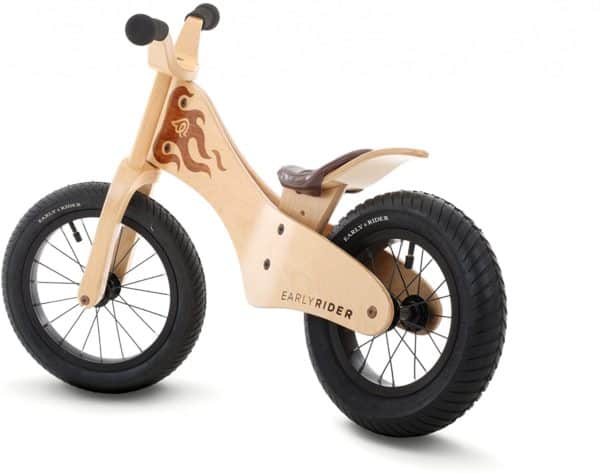
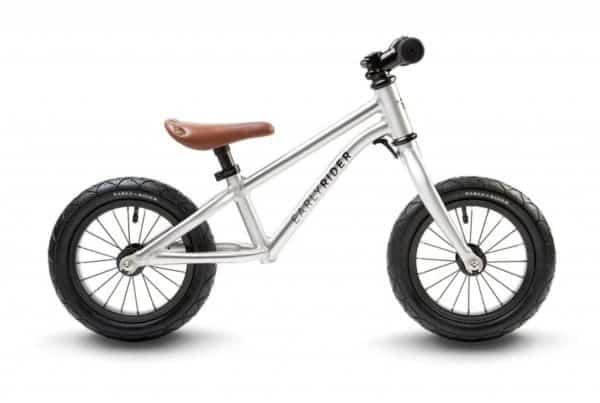
Early Rider
Price: $169-$249
Pros: Early Rider has a few options when it comes to balance bikes for kids under 5 years old. The Early Rider Lite and Classic are both beautifully-crafted gorgeous bikes, made with an eco-friendly wooden marine-grade birch frame, with a faux leather saddle, air tires, and a 100 pound weight limit. The Early Rider Charger 12 is perfect for younger children that want to get off the beaten path. The low-slung lightweight frame with a minimum seat height of just 12 inches is great for little ones. It has a beautiful brushed finish with aluminum hubs and axles with sealed cartridge bearings. Internal cabling for an optional rear brake upgrade.
Cons: Pricey. But, well made with a high-resell value and last for years.
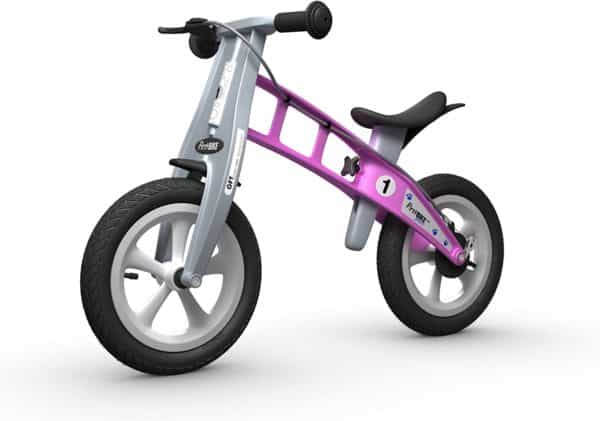
FirstBIKE
Price: $116
Pros: The FirstBIKE Street balance bike is a great option for kids up to 5 years old. This balance bike has a brake and comes with air tires, ideal for urban areas with concrete, stone, or packed dirt surfaces. It’s extremely safe (award-winning for safety), lightweight, and durable (weatherproof). There’s an additional/optional LowKit, that allows toddlers to ride from an earlier age (starting from 22 months old) and another optional SKISet. which can turn the bike into an upright sled!
Cons: This bike is best for young toddlers (2 to 3 years) as the flexible composite nylon frame tends to bend when maxed out. Not the best option for taller or older preschoolers (4+).
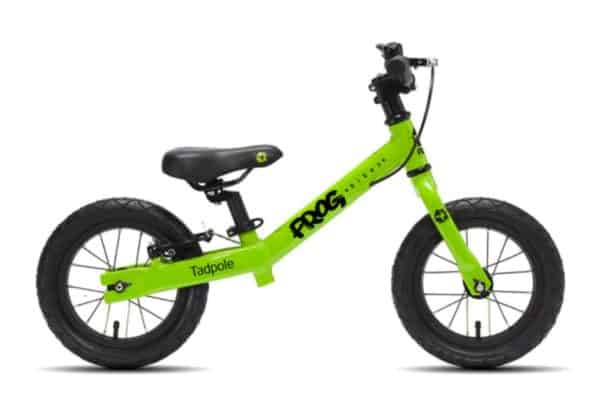
Frog Tadpole
Price: $210-260
Pros: Frog Bikes makes a line of balance bikes that come in 3 sizes, depending on the height and age of your child. The Frog Tadpole Mini is the smallest balance bike out there and one of the very few with 10-inch wheels for the teeny-tiniest of riders (1 and 2-year-olds). The classic Frog Tadpole bike is designed for 2 and 3-year-olds, with a 12-inch wheel. And the Frog Tadpole Plus is designed for 3 and 4-year-olds (14-inch wheel). All their bikes have low seat posts, air tires, rear handbrakes, and a quick-release seat post for easy height adjustment.
Cons: High price tag and hard to find online (sold out nearly everywhere).
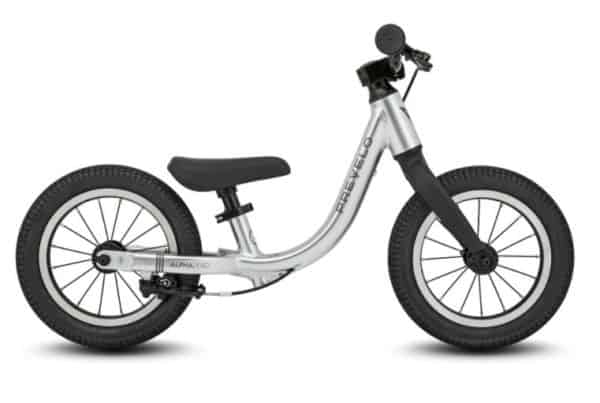
Prevelo
Price: $199
Pros: The Prevelo Alpha Zero is another top-of-the-line quality balance bike option for toddlers. This is a lightweight balance bike with a sleek brushed aluminum frame. The bike has an easy-to-pull and easy-to-reach handbrake, with internal routing for the brake cable to keep the bike looking clean. It has quality air tires with 12-inch wheels, adjustable quick-release seat clamp post, and kid-friendly hubs to keep out the muck and mud.
Cons: Pricey. Although, these bikes tend to have a very high resell value and can be used for years and passed down from kid-to-kid.
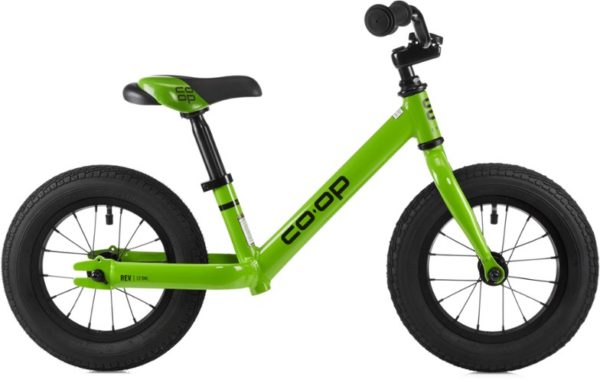
REI Co-op
Price: $139
Pros: The REI Co-op REV 12 kids’ balance bike is a quality, no-frills, durable option for little kids. It’s made with a lightweight aluminum frame and has pneumatic (air) tires with good traction. There’s a handle of the back of the seat for a bit of extra parental assistance. It’s simple, durable, and only weighs 9 pounds. It’s a great choice for REI co-op members and usually available to purchase with your membership discount.
Cons: No handbrakes, no quick-release seat post clamp for height adjustments, no steering limiter.
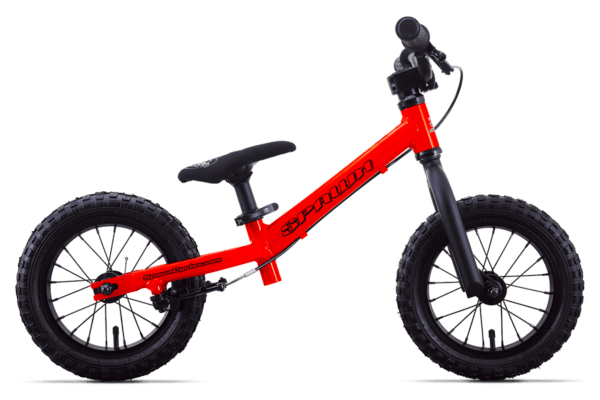
Spawn Tengu
Price: $250
Pros: Spawn is a quality brand that makes fantastic mountain bikes for kids. The Spawn Tengu 12 is the rugged off-road mountain bike version of a balance bike. It’s built like a real bike and not a plastic toy, with quality bike components such as an aluminum frame, chromoly forks, sealed alloy hubs and a real Tektro v-brake with a tiny, reach-adjustable, easy-action lever. The bike has big treaded tires and a quick release seat post for easy adjusting. It’s an extraordinary bike.
Cons: Super pricey. And, unless your little shredder is tearing up the trails, this bike is probably more “bike” than most toddlers need.
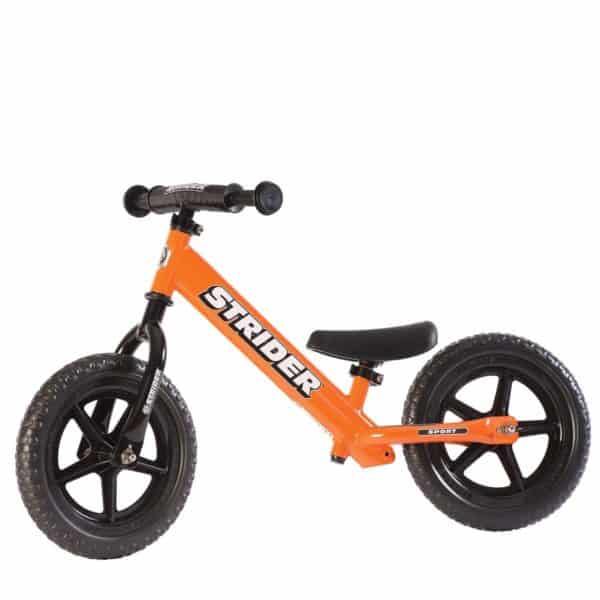
Strider
Price: $89-$179
Pros: When you think of a balance bike, you may immediately think of Strider balance bikes. Strider bikes start at a super competitive price point and are durable and adorable. Their 12-inch wheel line of bikes is made for kids 18 months to 5 years old. There are three options in this line, with different features and prices. The Strider Classic is the smallest bike for kids 18 months to 3 years old. The Strider Sport and the Strider Pro options are the same size and work for kids up to 5 years old. The Sport has a steel frame, and the Pro has an aluminum frame. All the bikes are lightweight and come with an extended seat post and a quick-release clamp to make seat adjustments easy.
Cons: All the bikes in the Strider line have polymer foam tires and do not have handbrakes.
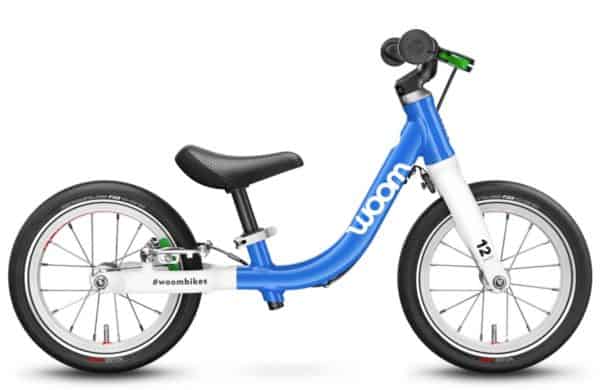
Woom
Price: $199 – $269
Pros: No matter the age or size of your kids, Woom bikes are at the top of the line for quality and our top bike for the best overall balance bike for kids. The Woom 1 balance bike is the smallest bike in their line-up and perfect for toddlers as young as 18 months. The Woom 1 Plus is for riders 3 years and older (or taller toddlers). The bikes are designed for toddlers with a lightweight aluminum frame, a low point of entry, long seat post, adjustable seat height, handbrakes, and rubber tires (air-filled) with steel spokes.
Cons: Pricey. While the excellent quality makes these balance bikes worth it, the high price tag may turn off many families.

Yedoo TooToo
Price: $199
Pros: The Yedoo Too Too balance bike is a high-quality bike that fits even the tiniest riders. This bike comes in a wide range of fun bold colors with reflective dots, making it one of the best-looking bikes on the market. The bikes come with extra-wide handlebars for optimum control and safety. pneumatic (air) tires, hand brakes, a low point of entry, and a lightweight, durable steel frame (8 pounds).
Cons: The seat post isn’t as easy to adjust as other balance bikes in this price range.
More biking resources
If you’re interested in reading more about biking with kids, here are a few posts you should check out:
Comments
2 responses to “Best Balance Bikes for Kids”
[…] start with a classic tricycle or a balance bike. We put together a post of our top picks for the best balance bikes for kids. Older kids will probably be more interested in a bike or a scooter. There are so many great […]
[…] A balance bike is a bike without pedals and it’s a perfect way for little kids and toddlers to learn how to ride a bike. It has most of the essential elements of a traditional bike (frame, fork, handlebars, wheels, etc.), but instead of pedaling, they push off the ground with their feet to move forward and place their feet down to stop. Since they’re in control, kids can develop their balance and coordination first, before progressing to a bike with pedals. Our top balance bike recommendation is the Woom 1. But, there’s no one size fits all and lots of things to take into consideration when choosing a balance bike. Here’s our full post on the Best Balance Bikes for Kids. […]

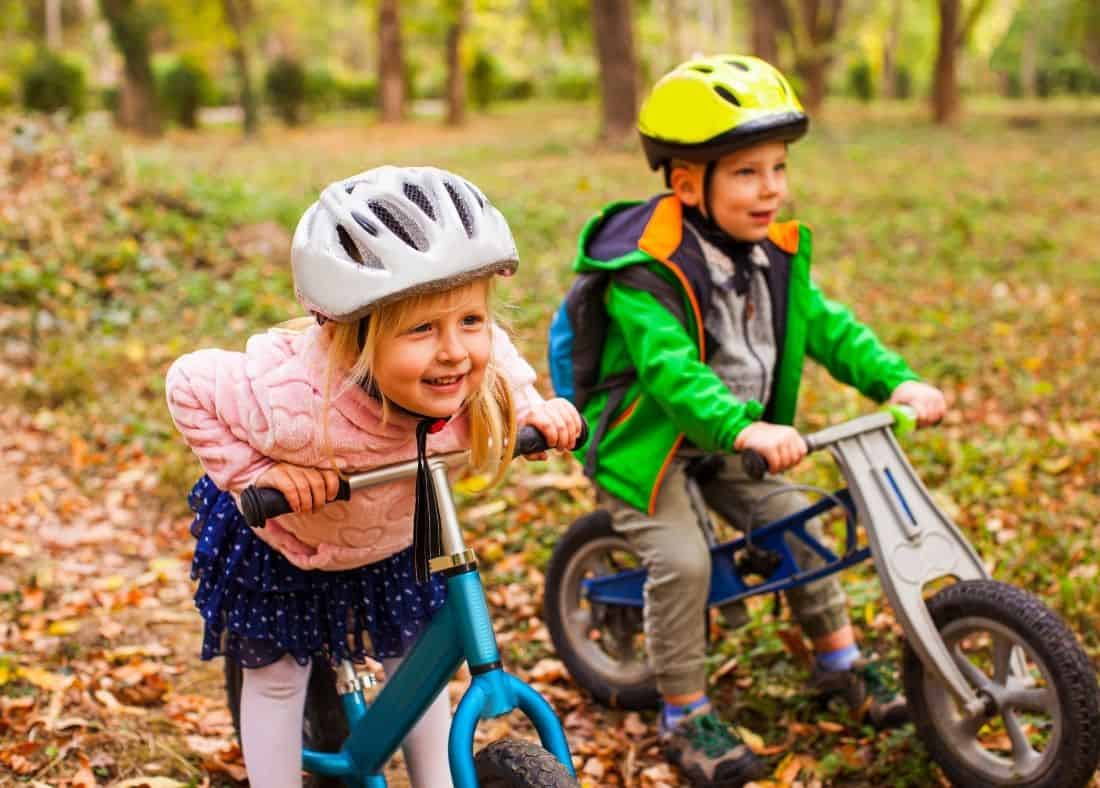
Leave a Reply